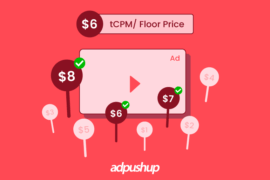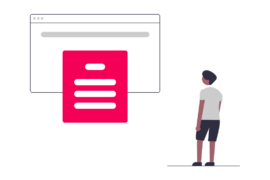With publishers in the race to monetise their websites to generate higher revenue through ads, compromising with user experience, at times, becomes inevitable, resulting in users implementing ad blockers and publishers being fed with lost ad revenue due to ad blockers.
Ad blockers, although to some extent, ensure user’s privacy along with optimised user experience with fast page loading and better bandwidth, yet, it has become a huge impediment, setting publishers for a setback with revenue loss.
As per the stats from Statista 2021, the number of users deploying ad blocks has significantly peaked to 27% in the US, aged between 16-24 and 25-35. Besides, the platforms on which ad blocks are used are computers (37%), followed by mobile (15%) and tablets (10%).
This significant loss caused by ad blocks has propelled publishers to look for ways to bypass these blockers and recover lost ad revenue from ad blocking, and mitigate the impact of ad blocking on their websites.
By investing in Adblock Recovery Software or partnering up with Adblock Recovery platforms, publishers can surely amplify their ARPV (Average Rate Per Visitor) and enable better first party connections.
In forthcoming paragraphs, a brief description of what ad blocking is and its impact on publishers along with usage of ad block recovery software will be provided.
What is an ad block?
Adblock is a software that blocks or replaces the recurring advertisements or those deemed unacceptable as per GDPR and IAB standards.
These ad block solutions are used either in the form of browser extensions ( such as Adblock, Adblock Plus) or are in built-in forms (such as in chrome, known as Better Ads Guidelines) to block intrusive ads, disable trackers and protect against malware.
However, most often than not, these ad blockers, although effective in almost blocking or hiding all irrelevant content, also prevent things that are not ads – logins, paywalls, subscriber content, resulting in broken links on websites, causing them to crash without notice or explanation. This further ruins the user experience as well.
Why are the ad blockers used?
Below are the top reasons to enable ad blockers:
- To enhance user experience
Adblock assists in mitigating the time taken for loading a page by blocking or making rich media ads disappear for better, faster and interrupted user engagement with the website.
- To prevent intrusive and irrelevant ads such as pop ups
As per Audience project, “upto three quarters feel that online ads are irrelevant to them,” generating negative attitude towards the particular website, thus the usage of ad blocks.
- To reduce Privacy concerns
As most of the ads consist of third party data , users are increasingly paranoid of being monitored, hence, breaching their privacy. With ad block technology, tracker ads are instantaneously blocked to restore the privacy safety.
Mechanism of ad blockers:
Ad blockers are made up of two separate codes – Filter List and Blockers.
- Filter List
In the filter list, a set of rules are embedded which tells what is to be hidden or blocked. As per the scripts, ad code is scanned and accordingly, action is taken.
- Blockers
While, on Blockers, ad content is filtered specifically to block or replace the content to make it more acceptable.
However, it is to be noted that ad Blockers can interfere with the website’s setup, causing it to break down. This, eventually, causes publishers to incur huge loss of ad revenue.
Before we dive into options for restoring ad revenue lost due to ad blocking and ways of Adblock detection, let’s consider the gravity of loss faced by publishers due to ad blocking.
- Breakdown of the site functionality.
- Loss of third party data connections
- Reduction in ad revenue and low CPMs
As most of the publishers generate profits using CPM (cost per Mille) or PPC (price per click) revenue models, every impression lost due to ad block is loss of money to the publishers. Digiday stated that over $30 billion ad revenue has been lost due to ad blockers.
This, obviously, has forced publishers to rethink ways to circumvent ad blockers to recover ad revenue.
Ways to recover lost ad revenue from ad blocking
Various ad block Recovery methods are being employed to fool ad blockers and restore ad revenue along with increasing CPM rates, strengthening customer engagement.
Consent management platform was launched by Google in 2017, specifically for the European traffic on the publisher’s site. It is also called Funding Choices, further working in collaboration with Google’s advertising services.
The prime role of CMP is to get the users to disable ad blocking by asking their consent to provide personalized ads for future insights that conform to GDPR and IAB Europe‘s TCF. This automatically leads to ad revenue recovery without jeopardising user’s flow.
- Alternate value exchange for ad block user to restore lost ad revenue
Many publishers have found a way round the ad blockers by offering value exchange to access control to website’s content.
For example, a publisher can restrict access to certain content which can be ad free or premium content unless the user makes a donation or subscribes to their newsletter! This paves the way to make up for the revenue lost from ad blocking.
- Ad reinsertions
Ad reinsertions is another method to recover the ad revenue loss due to ad block. This method has two separate functions:
- Ad recovery
Ad recovery is surprise insertion of original ad, previously blocked by the user, to the intended place, circumventing Adblock efforts.
- Ad replacement
Ad replacement, on the contrary, identifies the blocked ad and replaces it with an alternative ad which is deemed to be more acceptable. Interestingly, this replacement is done with consent of the user and only applicable on SSPs.
- Ad block detection and reporting
Deploying the best ad block Recovery solution is the ad block detection which reports the publishers which users have enabled ad block. It is basically a “bait-content”, unknown to users, appearing as an ad for the ad block.
How does it work?
Ad block detection, by placing bait content to confuse the ad block, scans the the codes whether ad block has hidden or replaced the baith content. If it has, it ascertains that the block is activated by the user.
- Allow listing or whitelisting
Allow listing or whitelisting enables the user to exempt their favourite sites from Ad blocking. Usually, the user is encouraged to whitelist the site, unlocking the high quality content which results in high RPMs. Besides, this method exhibits user’s support for the particular website.
- Partnering up with ad tech to recover ad revenue
Last but not the least, partnering up with a monetizing ad tech platform which offers amazing ad viewability without compromising user experience can set a way to get the lost ad revenue back. Adpushup, for example, renders the best pro-user-ad reinsertion technology to help publishers recover revenue without disrupting the user experience.
Not only does this service comply with acceptable ad standards but also considers the user’s consent. Besides providing ad optimisers and A/B testing, its auto change ad layout offers fastest ad delivery. Sign up for a demo!
In Closing:
In the digital world where user experience rules and privacy has taken the top seat, the new ways have been chalked out for catering to these services, benefitting not just the users but publishers as well.
The chunks of ad revenue lost due to adblock technology, it has become increasingly imperative to provide sustainable revenue to the publishers by providing top notch anti ad blocking services.
FAQs:
“Most of the Adblock recovery solutions are performance based, with no extra charges”. So, it depends on the platform one chooses for Adblock recovery solutions.
The easiest and quickest way is to search for an Adblock icon on your browser’s toolbar.
uBlock Origin
AdBlock
AdBlock Plus
Stands Fair Adblocker
Ghostery
Opera Browser
Google Chrome
Microsoft Edge

Shubham is a digital marketer with rich experience working in the advertisement technology industry. He has vast experience in the programmatic industry, driving business strategy and scaling functions including but not limited to growth and marketing, Operations, process optimization, and Sales.







